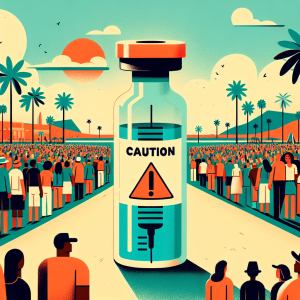
Are Vaccines Too Expensive to Save Lives?
A century ago, public health was a community project. Governments and public institutions developed vaccines, distributed them, and measured success not by revenue but by lives saved. Today, vaccine development is faster, smarter, and largely private—but the economics driving it may be failing the very people vaccines are meant to protect.
A 2025 opinion article in The Journal of Market Access & Health Policy takes a sweeping look at the history of vaccine innovation, its implementation, and, crucially, how pricing decisions determine whether populations are protected—or left vulnerable. The authors argue that the world’s vaccine pricing systems are stuck in an outdated “more for more” logic, and propose a better path forward: constrained optimization.
From Public Mission to Private Market
Vaccination began as a moral and public duty. Early public health institutes in Europe developed and manufactured critical vaccines—typhoid, smallpox, diphtheria—often distributing them free or at cost. By the mid-20th century, that model shifted. Global pharmaceutical companies took the lead, harnessing new cell cultures, recombinant DNA, and, more recently, artificial intelligence to design vaccines in record time. During the COVID-19 pandemic, over 150 research centers worldwide joined the vaccine race, but only a handful with deep pockets and high-tech infrastructure succeeded. The result: a triumph for science, but also a warning about inequitable access.
That transition from public to private innovation changed everything about how vaccines are valued. The process that once prioritized coverage and prevention now often prioritizes returns and patents. And in public health, that shift has consequences.
When Price Limits Protection
Vaccine pricing today follows the same framework used for new drugs: cost-effectiveness analysis (CEA). The idea is simple—if a vaccine produces more health gain per dollar than the accepted threshold (for example, €50,000 per quality-adjusted life year, or QALY), it’s considered a good investment.
But the authors point out a flaw: CEA assumes “more for more.” Higher health gains justify higher prices. In public health programs funded by fixed annual budgets, that logic breaks down. A vaccine might be cost-effective on paper yet still too expensive to reach enough people to achieve herd protection. And without herd protection, the program fails—no matter how “efficient” the math looks.
The authors propose reframing pricing around coverage optimization, not marginal efficiency. In other words, a slightly less profitable vaccine that reaches everyone is better—ethically and economically—than an expensive one that protects only some.
The Case for Constrained Optimization
Enter constrained optimization (CO)—an analytic framework that asks a different question: Given a fixed health budget, what mix of interventions will maximize public benefit?
Rather than chasing theoretical thresholds, CO defines the budget first, then identifies the vaccine or combination of vaccines that produces the greatest health gain within that constraint. This method can evaluate trade-offs such as:
- How much coverage can we afford at current prices?
- What price allows full coverage of the at-risk population?
- Which vaccines should be prioritized if budgets are limited?
This approach may sound academic, but its implications are practical and urgent. COVID-19 revealed how pricing and procurement systems often favor wealthy nations. The authors argue that CO could help align pricing with global public health goals, ensuring vaccines remain both profitable and widely accessible.
A Historical Lesson: When Public Health Paid the Price
The article traces how public health institutes—once central to vaccine innovation—gradually lost influence as production privatized. The market now rewards speed, scale, and intellectual property, but rarely long-term monitoring, local engagement, or adaptation to shifting virus strains. This imbalance can lead to both vaccine shortages (when tendering drives prices too low, pushing producers out) and limited coverage (when high prices restrict budgets). Either way, communities lose.
The authors call for a renewed public-private balance, where governments and international organizations reinvest in local vaccine infrastructure, data collection, and education. In this model, private companies focus on innovation and production efficiency, while public bodies ensure equitable distribution and trust.
What This Means in Practice
For local health departments and NGOs:
- Treat vaccination as a systems investment, not a one-time purchase.
- Model programs around maximum coverage, not minimum cost per dose.
- Collect real-time data on uptake, immunity gaps, and strain shifts to adjust quickly.
For national policymakers:
- Integrate constrained optimization into pricing negotiations and immunization strategies.
- Build flexible funding pools that allow rapid reallocation during outbreaks.
- Support local production or partnerships to avoid supply bottlenecks.
For international funders and multilateral agencies:
- Incentivize collaboration, not competition, among vaccine developers.
- Fund open genomic databases and AI-driven research tools that reduce redundancy.
- Tie procurement decisions to measurable public-health outcomes, not political pressure.
What’s Next — and What Could Go Wrong
The authors foresee three forces shaping the next era of vaccination:
- Technology acceleration: AI and synthetic biology can cut vaccine development timelines from years to weeks.
- Fragmented research ecosystems: Without coordination, duplication wastes billions.
- Market distortion: Tender fatigue and profit-driven pricing risk both shortages and inequity.
Their proposed solution is structural: fewer siloed research centers, better global coordination (through initiatives like CEPI), and adoption of constrained optimization as the standard for pricing preventive vaccines. Otherwise, public health could again find itself priced out of its own success.
Questions for Reflection
- How could your agency use constrained optimization to balance price and coverage?
- Should vaccine R&D be treated as a global public good, not a private commodity?
- What would it take for your community to measure “success” in prevention—not profit?



